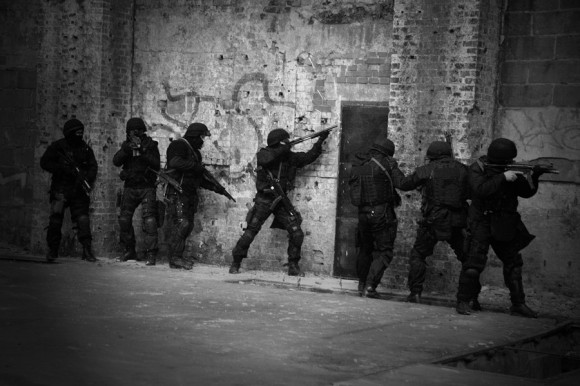Government agencies are not always successful using social media and telecommunication to uncover the intentions of terrorists because terrorists are now more careful in utilizing these technologies for planning and preparing for attacks. But researchers at Binghamton University, State University of New York, say they have developed a new framework that is able to understand future terrorist behaviors by recognizing patterns in past attacks.
The scientists claim they can predict terrorist behaviors with more than 90 percent accuracy using their model.
The new framework, the Networked Pattern Recognition (NEPAR) Framework, uses data on more than 150,000 terrorist attacks between 1970 and 2015 and defines the useful patterns of attacks to understand behaviors, to analyze patterns and connections in terrorist activity, to predict terrorists’ future moves, and finally, to prevent and detect potential terrorist behaviors.
Binghamton University PhD student Salih Tutun developed a framework that calculates the relationships among terrorist attacks (e.g. attack time, weapon type) and detects terrorist behaviors with these connections. Mohammad Khasawneh, professor and head of the Systems Science and Industrial Engineering (SSIE) department at Binghamton University, assisted and advised Tutun with his research.
In the framework, there are two main phases: (1) building networks by finding connections between events, and (2) using a unified detection approach that combines proposed network topology and pattern recognition approaches.
First, the framework identifies the characteristics of future terrorist attacks by analyzing the relationship between past attacks. Comparing the results with existing data shows that the proposed method was able to successfully predict most of the characteristics of attacks with more than 90 percent accuracy.
Moreover, after building the network with connections, the researchers propose a unified detection approach that applies pattern classification techniques to network topology and features of incidents to detect terrorism attacks with high accuracy, and identify the extension of attacks (90 percent accuracy), multiple attacks (96 percent accuracy) and terrorist goals (92 percent accuracy). Hence, governments can control terrorist behaviors to reduce the risk of future events. The results could potentially allow law enforcement to propose reactive strategies, said Tutun.
“Terrorists are learning, but they don’t know they are learning. If we can’t monitor them through social media or other technologies, we need to understand the patterns. Our framework works to define which metrics are important,” said Tutun. “Based on this feature, we propose a new similarity (interaction) function. Then we use the similarity (interaction) function to understand the difference (how they interact with each other) between two attacks.”
For an example, he asks, what is the relationship between the Paris and the 9/11 attacks? “When we look at that, if there’s a relationship, we’re making a network. Maybe one attack in the past and another attack have a big relationship, but nobody knows. We tried to extract this information,” Tutun said.
According to the researchers, previous studies have focused on understanding the behavior of individual terrorists (as people) rather than studying the different attacks by modeling their relationship with each other. And terrorist activity detection focuses on either individual incidents, which does not take into account the dynamic interactions among them; or network analysis, which gives a general idea about networks but sets aside functional roles of individuals and their interactions.
“Predicting terrorist events is a dream, but protecting some area by using patterns is a reality. If you know the patterns, you can reduce the risks. It’s not about predicting, it’s about understanding,” said Tutun.
Tutun believes that policymakers can use these approaches for time-sensitive understanding and detection of terrorist activity, which can enable precautions to avoid against future attacks.
“When you solve the problem in Baghdad, you solve the problem in Iraq. When you solve the problem in Iraq, you solve the problem in the Middle East. When you solve the problem in the Middle East, you solve the problem in the world,” said Tutun. “Because when we look at Iraq, these patterns are happening in the USA, too.”
The original paper, “New framework that uses patterns and relations to understand terrorist behaviors,” is available on Expert Systems with Applications.
Related:
- Using Big Data to Predict Terrorist Acts Amid Privacy Concerns
- AIR Worldwide Expands Global Terrorism Risk Model
- Aon Benfield’s Impact Forecasting Launches New Blast Model for Terrorist Attacks
- FBI Warns of More Terrorist Attacks in U.S. as ISIS Is Defeated in Syria
[graphiq id=”5q1jouixosB” title=”Terrorist Attacks and Threats in United States” width=”600″ height=”632″ url=”https://w.graphiq.com/w/5q1jouixosB” ]
[graphiq id=”hMwQx7FnG5f” title=”Global Terrorist Attacks by Year” width=”600″ height=”613″ url=”https://w.graphiq.com/w/hMwQx7FnG5f” ]
Topics Catastrophe Natural Disasters
Was this article valuable?
Here are more articles you may enjoy.



 Wildfires, Storms Fuel 2025 Insured Losses of $108 Billion: Munich Re Report
Wildfires, Storms Fuel 2025 Insured Losses of $108 Billion: Munich Re Report  Adjusters Launch ‘CarFax for Insurance Claims’ to Vet Carriers’ Damage Estimates
Adjusters Launch ‘CarFax for Insurance Claims’ to Vet Carriers’ Damage Estimates  Supreme Court Rejects Challenge to $2.46B Boy Scouts Sex Abuse Settlement
Supreme Court Rejects Challenge to $2.46B Boy Scouts Sex Abuse Settlement  CEOs on Guard as Trump Rattles Companies With Series of Edicts
CEOs on Guard as Trump Rattles Companies With Series of Edicts 

